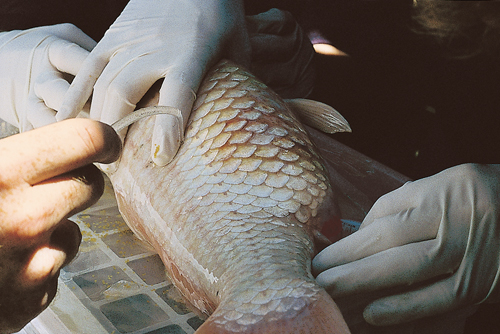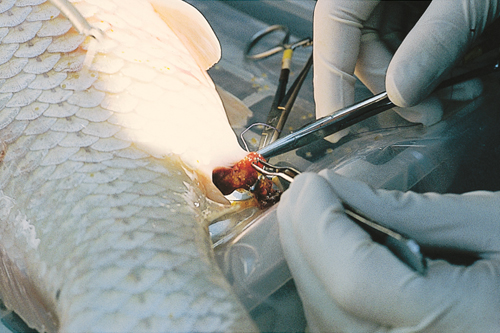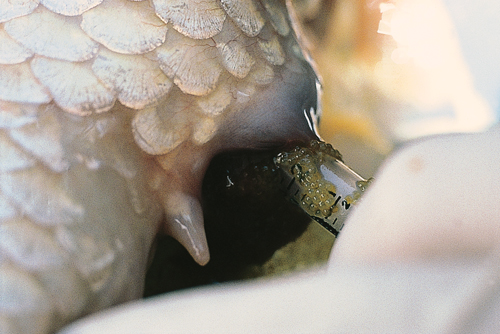Difference between revisions of "Ornamental Fish Q&A 02"
| Line 1: | Line 1: | ||
| − | |||
| − | |||
| − | |||
[[File:Ornamental Fish 02a.jpg|centre|500px]] | [[File:Ornamental Fish 02a.jpg|centre|500px]] | ||
<br> | <br> | ||
Revision as of 22:22, 28 October 2011
A mature female tancho kohaku koi from a 75,000-L well-maintained pond presents because the owner noticed that the fish was not eating and appeared swollen. On physical examination the skin is erythematous, the coelomic region is very enlarged, and there is a red amorphous protrusion from the vent.
| Question | Answer | Article | |
| What conditions are on your differential list? |
|
Link to Article | |
| What diagnostic tests would you perform? | Physical examination can yield clues as to whether the prolapse is ovarian or intestinal in origin. The ovarian tissue is usually grainy in appearance with small white to yellow follicles incorporated in the vascular ovarian tissue. Intestine will usually have a smooth surface. Cytology can further help differentiate between organs since ovarian tissue will have immature ova while the intestinal impressions yield epithelial cells and possibly fecal material. |
Link to Article | |
| What is the diagnosis? | Ovarian prolapse through the genital pore. |
Link to Article | |
| How would you treat the problem? | Excision of the exteriorized ovarian tissue is recommended. This tissue is vascular and friable. Encircling ligatures can be placed and the distal tissue removed with a scalpel or scissors. Depending on the fish’s spawning condition, eggs can be manually stripped from the fish. To prevent further ovarian prolapse, a sterile syringe of appropriate size can be inserted into the genital pore and the eggs expressed by cranial–caudal milking pressure along the flanks to push the eggs around the syringe. A purse-string suture can be placed around the genital pore while carefully avoiding the vent and allowing enough room for residual eggs to pass from the pore. |
Link to Article | |


